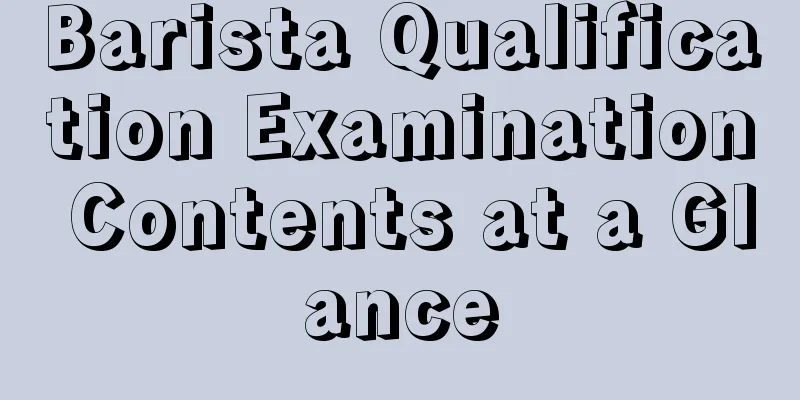
Barista Qualification Examination Contents at a Glance
The Barista Certification Exam is an important standard for assessing the skills and knowledge level of baristas. The exam covers many aspects, including the origin and history of coffee, the roasting process, the variety and taste characteristics, extraction methods, etc. These contents will be introduced in detail below.
1. Origin and history of coffee
In this section, candidates need to understand the origin of coffee and its spread. They need to understand the story of how the Arabs first discovered and used coffee beans to make a beverage, and understand how Europe came into contact with this beverage and promoted it.
2. Baking process
Roasting is a necessary step to produce coffee with a strong aroma and rich taste. In this part, candidates need to understand the impact of different roasting degrees on the flavor and characteristics of coffee, and learn how to adjust the temperature and time to achieve the desired effect.
3. Varieties and flavor characteristics
There are many different varieties of coffee, each with its own unique taste characteristics. Candidates need to understand the main coffee varieties, such as Arabica and Robusta, and be able to describe aspects of their flavor, acidity, bitterness and sweetness.
4. Extraction method
Extraction is the process of bringing coffee grounds into contact with water to extract the aroma and flavor of the coffee. In this part, candidates need to master different extraction methods (such as drip, immersion and pressure extraction) and their impact on the quality of coffee.
5. Milk frothing technology
Milk frothing is a necessary skill for making milk-based beverages such as lattes. Candidates need to learn the steps required to use a steam machine to produce fine and long-lasting milk froth, and understand the effects of adjusting the temperature and angle on the quality of milk froth.
6. Coffee Art
In addition to basic skills, the exam will also cover some aspects of coffee art. Candidates need to understand latte art techniques, coffee cup art and creative drink making, and be able to demonstrate their creativity and artistic expression.
7. Coffee knowledge and services
As a barista, in addition to mastering the techniques and process of making coffee, you also need to have a wealth of coffee knowledge and provide quality service. Candidates need to learn about different countries' production areas, special processing methods, and interaction with customers.
Conclusion
From the above introduction, we can see that the content of the barista qualification examination is very comprehensive and covers many aspects. Only by fully mastering these knowledge and skills can you become a qualified barista and provide customers with a high-quality coffee experience.
